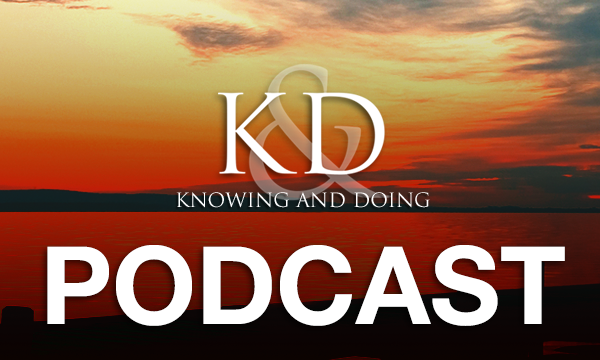Back to series
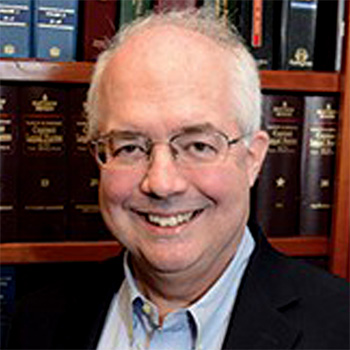

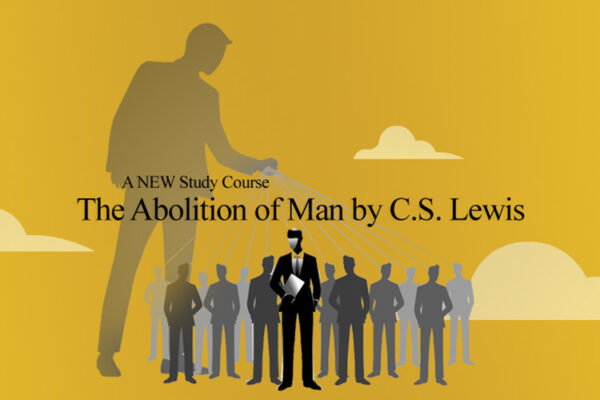
Download or Listen to Audio
The Pilgrim's Process
Click here to open a Print - Friendly PDF
 Mark Galli recently noted: “A few decades ago, Christianity Today asked leading evangelicals of the previous generation what books most shaped them, and the one book mentioned by almost every one was Pilgrim’s Progress.”1 The powerful influence of this book, first published in 1678, has been long-standing. Leland Ryken, now professor emeritus of English at Wheaton College, calls it “a Christian classic whose importance is impossible to overstate.” According to Ryken, “For more than two centuries after its first publication, The Pilgrim’s Progress ranked just behind the King James Bible as the most important book in evangelical Protestant households.”2 He observes that “through the ages, parents have read The Pilgrim’s Progress to their children much as they read Bible stories to them.”3 J.I. Packer states that “next to the Bible, John Bunyan’s Pilgrim’s Progress is the best-selling Christian book of all time,” and “by common consent it is Bunyan’s masterpiece and a milestone in English literature, both sacred and secular.”
Mark Galli recently noted: “A few decades ago, Christianity Today asked leading evangelicals of the previous generation what books most shaped them, and the one book mentioned by almost every one was Pilgrim’s Progress.”1 The powerful influence of this book, first published in 1678, has been long-standing. Leland Ryken, now professor emeritus of English at Wheaton College, calls it “a Christian classic whose importance is impossible to overstate.” According to Ryken, “For more than two centuries after its first publication, The Pilgrim’s Progress ranked just behind the King James Bible as the most important book in evangelical Protestant households.”2 He observes that “through the ages, parents have read The Pilgrim’s Progress to their children much as they read Bible stories to them.”3 J.I. Packer states that “next to the Bible, John Bunyan’s Pilgrim’s Progress is the best-selling Christian book of all time,” and “by common consent it is Bunyan’s masterpiece and a milestone in English literature, both sacred and secular.”
4What kind of a book is The Pilgrim’s Progress? At one level, the book tells the story of a journey by a man named Christian from the City of Destruction to the Celestial City. However, the book is more than just a travel story. Pastor and theologian Derek Thomas described it this way in a sermon series about the book:
Now this book, of course, is an allegory, the illustrative representation of one thing by another; and in Bunyan’s case, he will employ parables and metaphors, and fancies (by which you and I would read “fantasies”), and similitudes in Pilgrim’s Progress of every sort, and he does this by seeing the Christian life as a journey, a road trip, to the Celestial City, to heaven.
Then he pictures that road as straight and narrow, and strewn with all kinds of dangers and temptations and pitfalls, and then by introducing to us characters with delightful names, illustrative as they are of events and issues and realities and circumstances that all of us as Christians are familiar with — folk like Worldly Wiseman, and Lord Hategood, and Mr. Legality, and Mr. Liveloose, and Giant Despair — as well as places, including the House of Interpreter, and Doubting Castle, and the Valley of Humiliation, Delectable Mountains, and By-Path Meadow.
5The Pilgrim’s Progress is also a book that can be read and reread. Charles Spurgeon read it more than one hundred times.6 In September 2008, J.I. Packer answered questions from C.S. Lewis Institute Fellows and pastors in the Washington, D.C., area. In answering the question “Which writers have influenced you the most, and which writers would you recommend?” he noted, among others, “Read John Bunyan’s The Pilgrim’s Progress, both parts, once a year. I do that; I don’t see why you shouldn’t.”
 7While, as Lane T. Dennis, president and publisher of Crossway Books put it, the book was at one time “loved and read in nearly every home in England and North America,”8 it is much less likely to be read today, even by evangelical Christians. In an essay on The Pilgrim’s Progress published in 2004, Packer noted that (as of then), when he asked his “classes of young and youngish evangelicals… who has read Pilgrim’s Progress, not a quarter of the hands go up.”
7While, as Lane T. Dennis, president and publisher of Crossway Books put it, the book was at one time “loved and read in nearly every home in England and North America,”8 it is much less likely to be read today, even by evangelical Christians. In an essay on The Pilgrim’s Progress published in 2004, Packer noted that (as of then), when he asked his “classes of young and youngish evangelicals… who has read Pilgrim’s Progress, not a quarter of the hands go up.”
9Why is The Pilgrim’s Progress read today by far fewer people than in the past? One significant reason is that, as Leland Ryken observes, it “is initially a difficult book for modern readers.” He notes two obstacles: (1) the archaic language, which closely resembles that of the King James Bible, and (2) the fact that “the taste for allegory is today somewhat out of vogue.”
10Before passing along tips for reading The Pilgrim’s Progress today, I will provide some brief additional information about the book and its author.
The Pilgrim’s Progress and Its Author
John Bunyan was born in England in 1628 and lived until 1688. He was a Puritan and a Baptist, well known as both a preacher and a writer. As a Baptist, he was outside the established church at a time when there was little religious freedom. He spent about twelve years in prison for refusing to stop preaching without a license from the Church of England. He is believed to have written The Pilgrim’s Progress while in prison.
Charles Spurgeon said this about Bunyan:
He had studied our Authorized Version [Kings James version]…till his whole being was saturated with Scripture;…his writings…continually make us feel and say, “Why this man is a living Bible!” Prick him anywhere; and you will find that his blood is Bibline, the very essence of the Bible flows from him. He cannot speak with out quoting a text, for his soul is full of the word of God.11
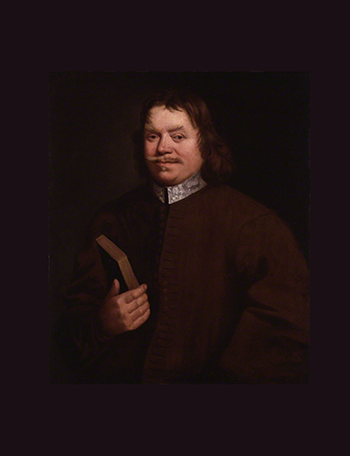 As discussed earlier, The Pilgrim’s Progress tells the story of Christian’s journey from the City of Destruction to the Celestial City. It was immediately popular, and Bunyan wrote a second book, published six years later in 1684, telling the story of Christian’s wife, Christiana, and their four sons making the same journey. While the two books were published separately for a number of years, since 1728 they have often been published as a combined book,12 with the two books called “The First Part” and “The Second Part.”
As discussed earlier, The Pilgrim’s Progress tells the story of Christian’s journey from the City of Destruction to the Celestial City. It was immediately popular, and Bunyan wrote a second book, published six years later in 1684, telling the story of Christian’s wife, Christiana, and their four sons making the same journey. While the two books were published separately for a number of years, since 1728 they have often been published as a combined book,12 with the two books called “The First Part” and “The Second Part.”
Although both books (or parts) are highly recommended, I will focus on Book 1, which is more widely read. I would suggest that first-time readers initially focus on reading Book 1 and spend some time thinking about and reflecting on it before deciding whether or when to read Book 2.
(For more information about the life of John Bunyan, see David H. Calhoun, “Profile in Faith: Grace Abounding: The Life of John Bunyan,” Knowing & Doing, Summer 2010.)13
Tips for Reading The Pilgrim’s Progress Today
As noted earlier, Leland Ryken observed that The Pilgrim’s Progress is initially a difficult book for modern readers, citing its archaic language and allegorical nature. In this section, I will pass on a number of tips for reading the book today, including noting some offered by Ryken.
Dealing with Archaic Language
There are least two approaches to the archaic language of The Pilgrim’s Progress. One, offered by Ryken, “is to accept the archaic language as a feature of the book and enjoy it as part of its arresting strangeness (a phrase that comes from J.R.R. Tolkien’s endorsement of fantasy and fairy tales as literary genres).”14 Another approach is to read an edition with updated language. In the next section, I cite an edition of The Pilgrim’s Progress published by Crossway that is “lightly edited.”
Individual reading preferences vary. Should you try an edition with original or updated language? For most first-time readers, my suggestion would be try an updated language version unless you have a particular reason to read an original-language version. You will likely find it easier to follow and understand Bunyan’s story, and you will be less likely to get bogged down in the prose. (This is somewhat analogous to reading the NIV or ESV translation of the Bible rather than the King James Version.) Also, once you have a good understanding of the story, you will find it easier to read an edition with the original language, should you wish to do so.
Selecting an Edition Designed to Facilitate Readability
There are many editions of The Pilgrim’s Progress to choose from, each with its own distinctives. I suggest that first-time readers select an edition that is designed to facilitate readability. (This is a different issue than original versus updated language.) I cite two such editions below. The first is the Crossway updated language version I noted earlier; the second is an edition published by Desiring God (a ministry founded by John Piper and Jon Bloom), which contains Bunyan’s original version.
Crossway updated language version (2009, edited by C.J. Lovik).15 In the publisher’s foreword, Lane T. Dennis explains that the purpose in publishing the edition is to carry forward the treasured legacy of The Pilgrim’s Progress for a new generation. He explains further:
With this as the objective, the text of this edition has only been lightly edited. Thus the intention of both the editor and the publisher has only been to update highly archaic words and awkward sentence structure, while retaining the beauty and brilliance of the original story. Likewise, the intention of this edition has never been to simplify or to change Bunyan’s original story, but to let the story unfold with all the power, truth, and remarkable creativity of the original.16
The hardback edition book is beautifully produced, and includes thirty new, full-page color illustrations. (It would be an attractive gift book.) It is also available as an ebook. It includes only Book 1.
Desiring God edition, original version (2014).17 This edition “contains Bunyan’s original version, unabridged and designed for modern readability.” It also includes only Book 1, but with the original language. While the original book and some current editions are not divided into chapters or sections, this edition is divided into sections with headings that help move the reader along. This edition also includes three additional items at the beginning of the book: a helpful foreword by Leland Ryken, a twenty-seven-page biography of John Bunyan by John Piper, and a preface by John Newton written in 1776. This edition may be purchased in paperback on Amazon or downloaded for free at desiringGod.org.
Reading Allegory
 According to Ryken, “There is a right way and a wrong way to deal with the allegorical aspect of The Pilgrim’s Progress.” He explains:
According to Ryken, “There is a right way and a wrong way to deal with the allegorical aspect of The Pilgrim’s Progress.” He explains:
The wrong way is to slight the literal, physical level of action on the premise that the religious meaning is what really matters. The right way is to abandon ourselves to the story qualities of the work and let the second level of understanding grow out of that narrative experience. Giant Despair [a character in the book] first of all needs to be a terrifying giant in our imagination, and then he becomes a picture of psychological and theological realities.18
Ryken states that “we will fare just fine with Bunyan’s allegorical story if we read it is a travel story and adventure story first, and then allow the theological and moral level to emerge as an extra source of enjoyment and edification.”
19In an essay titled “The Vision of John Bunyan,” C.S. Lewis warns against what he calls “the pernicious habit of reading allegory as if it were a cryptogram to be translated; as if, having grasped what an image (as we say) ‘means’, we threw the image away and thought of the ingredient in real life which it represents.” Lewis continues:
But that method leads you continually out of the book back into the conception you started from and would have had without reading it. The right process is the exact reverse. We ought not to be thinking ‘This green valley, where the shepherd boy is singing, represents humility’; we ought to be discovering, as we read, that humility is like that green valley. That way, moving always into the book, not out of it, from the concept to the image, enriches the concept. And that is what allegory is for.20
Enlisting the Aid of a Helpful Guide
When traveling in unfamiliar territory, it’s helpful to have a reliable guide, and the same can be true when reading many of the “old books.” Leland Ryken can be just such a guide for The Pilgrim’s Progress, through two resources.
I have already mentioned, and quoted from, Ryken’s foreword to the Desiring God edition. This is an excellent introductory resource to read. The foreword is seven pages long and includes the following sections: Facts of Publication; Author and Composition; The Pilgrim’s Progress as a Literary Classic; An Allegory; The Religious Vision of The Pilgrim’s Progress; and Tips for Reading Bunyan’s Masterpiece. (Even if you decide to read a different edition of The Pilgrim’s Progress, you can avail yourself of Desiring God’s free download to read this foreword and perhaps the other items included at the beginning of the book.)
The other resource is a separate book by Leland Ryken, Bunyan’s The Pilgrim’s Progress,21 which is part of Crossway’s Christian Guides to the Classics series. The book is short, only seventy-nine pages, and covers Books 1 and 2. While a variety of introductory and background information is included at the beginning, most of the book is designed to help lead readers through The Pilgrim’s Progress chapter by chapter, providing for each chapter a plot summary, commentary, and thoughts for reflection or discussion. Ryken notes that “because this reader’s guide marches through the text in sequence, it can be used with virtually any edition of Pilgrim’s Progress.”22
Other Editions of The Pilgrim’s Progress
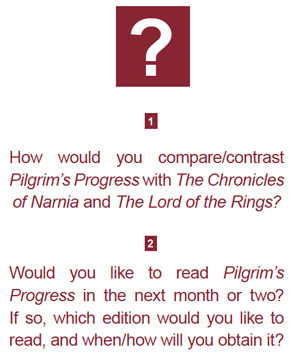 I have so far cited two editions designed to facilitate readability, both of which include only Book 1. While there are many other editions available, I note here two that include both books and which, according to Ryken, “have critical apparatus (introductions at the beginning and notes at the end) by editors of known Christian sympathies”:23
I have so far cited two editions designed to facilitate readability, both of which include only Book 1. While there are many other editions available, I note here two that include both books and which, according to Ryken, “have critical apparatus (introductions at the beginning and notes at the end) by editors of known Christian sympathies”:23
N.H. Keeble, ed., John Bunyan: The Pilgrim’s Progress, Oxford World Classics.
Roger Pooley, ed., John Bunyan: The Pilgrim’s Progress from This World, to That Which Is to Come, Penguin Books.
A Question from J.I. Packer
I will conclude by quoting from the final portion of Packer’s 2004 essay on The Pilgrim’s Progress:
Our rapport with fantasy writing, plus our lack of grip on the searching, humbling, edifying truths about spiritual life that the Puritans understood so well, surely mean that the time is ripe for us to dust off Pilgrim’s Progress and start reading it again. Certainly, it would be great gain for modern Christians if Bunyan’s masterpiece came back into its own in our day. Have you yourself, I wonder, read it yet?24
|
Notes:
|
|||

J. Edward Glancy
AttorneyJ. Edward Glancy, Attorney, was a member of the C.S. Lewis Institute Fellows Class of 2002-2003 and completed the Year Two program the following year. He graduated from Franklin and Marshall College in 1977 and received a J.D. from Duke University School of Law in 1980. Ed served as an attorney with the National Highway Traffic Safety Administration for 32 years, most of that time as Senior Attorney. He currently serves the C.S. Lewis Institute part-time as a volunteer.

Recommended Teaching Series:
Derek Thomas is currently Chancellor’s Professor of Systematic and Pastoral Theology, Reformed Theological Seminary, and Senior Minister at First Presbyterian Church (ARP) in Columbia, SC. He was formerly Minister of Teaching at First Presbyterian Church (PCA) in Jackson, MS.
The following teaching series on Pilgrim’s Progress by Thomas are recommended: Two sermon series from First Presbyterian Church, Jackson MS, Derek Thomas – Pilgrim’s Progress (12 sermons, June to September, 2005) (these sermons cover Book 1 (or part 1) of Pilgrim’s Progress) — audio and transcriptions may be downloaded.
Derek Thomas – Pilgrim’s Progress – Christiana’s Story (seven sermons, October to December, 2007) (these sermons cover Book 2 (or part 2) of Pilgrim’s Progress) – audio and transcriptions may be downloaded
Teaching series from Ligonier Ministries
Derek Thomas –The Pilgrim’s Progress: A Guided Tour (this series from Ligonier Ministries covers Books 1 and 2 (or parts 1 and 2); available as DVD, CD, video/audio download; a study guide is also available) (January 2014).
A Timeless Tale of Faith’s Triumph. The Pilgrim’s Progress, written by John Bunyan over 300 years ago, is one of the most widely-circulated books ever to be published in the English language. In spite of its popularity in the past, many people today are not familiar with this masterpiece. Join respected pastor and theologian Dr. Derek Thomas as he takes readers along this allegorical journey, showing that Christians have as much to gain from this book today as they did hundreds of years ago. With the available study guide, this is an excellent resource for individual or group study.)
 COPYRIGHT: This publication is published by C.S. Lewis Institute; 8001 Braddock Road, Suite 301; Springfield, VA 22151. Portions of the publication may be reproduced for noncommercial, local church or ministry use without prior permission. Electronic copies of the PDF files may be duplicated and transmitted via e-mail for personal and church use. Articles may not be modified without prior written permission of the Institute. For questions, contact the Institute: 703.914.5602 or email us.
COPYRIGHT: This publication is published by C.S. Lewis Institute; 8001 Braddock Road, Suite 301; Springfield, VA 22151. Portions of the publication may be reproduced for noncommercial, local church or ministry use without prior permission. Electronic copies of the PDF files may be duplicated and transmitted via e-mail for personal and church use. Articles may not be modified without prior written permission of the Institute. For questions, contact the Institute: 703.914.5602 or email us.
-
Recent Podcasts
Ralph Waldo Emerson’s Philosophy and Influence
by David George Moore on July 26, 2024Ralph Waldo Emerson was a gifted nineteenth century...Read More
-
The Side B Stories – Nate Sala’s Story
by Jana Harmon, Nate Sala on July 19, 2024
-
Terrorism Through the Eyes of Faith
by Dennis Hollinger on July 12, 2024
-
Recent Publications
Hasn’t Science Proven That Belief in God Is an Outdated Superstition?
by Sharon Dirckx on July 1, 2024Many assume that scientific practice and belief in...Read More
-
Has the Bible Been Corrupted as Some Muslims Claim?
by Andy Bannister on June 1, 2024
-
Seeing Jesus Through the Eyes of Women
by Rebecca McLaughlin on May 15, 2024
0
All Booked
0.00
All Booked
0.00
All Booked
22194
C.S. Lewis’s The Abolition of Man Live Online Small Group 8:00 PM ET
https://www.cslewisinstitute.org/?event=c-s-lewiss-the-abolition-of-man-study-course&event_date=2024-10-02®=1
https://www.paypal.com/cgi-bin/webscr
2024-10-02

Next coming event
Days
Hours
Minutes
Seconds
C.S. Lewis’s The Abolition of Man Live Online Small Group 8:00 PM ET
On October 2, 2024 at 8:00 pmSpeakers

J. Edward Glancy
Attorney
Team Members

J. Edward Glancy
AttorneyJ. Edward Glancy, Attorney, was a member of the C.S. Lewis Institute Fellows Class of 2002-2003 and completed the Year Two program the following year. He graduated from Franklin and Marshall College in 1977 and received a J.D. from Duke University School of Law in 1980. Ed served as an attorney with the National Highway Traffic Safety Administration for 32 years, most of that time as Senior Attorney. He currently serves the C.S. Lewis Institute part-time as a volunteer.



